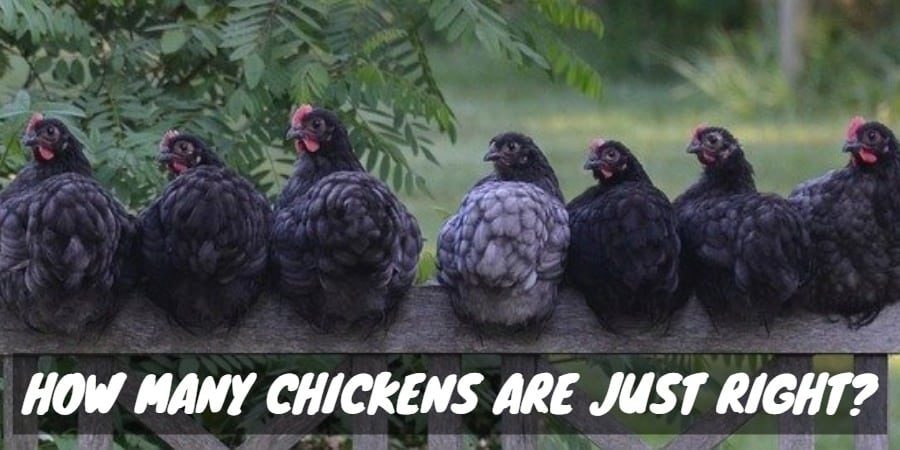If you are planning to raise a small flock of chickens but don’t know where to start, then you’re in luck. We’re here to help! The first thing you have to understand is that chickens love to be active and they need the space to behave naturally. But sometimes you will need to confine them for different reasons.
You should start small. One of the common mistakes that we see so often is beginners starting with a flock that is too large. They will end up losing their minds over the amount of work involved. Or they end up with so many eggs that they have to throw excess eggs away.
Start with three or four chickens and then grow your population from there. This is the most common method for successfully growing a flock. You can also experiment with different breeds and different types of feed.
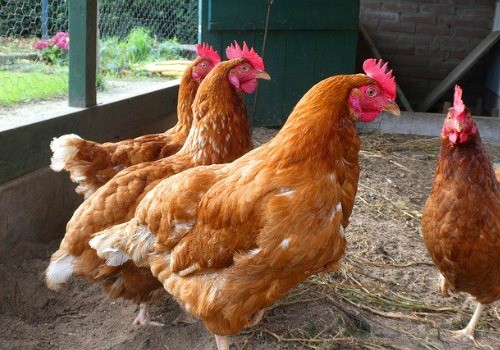
How Many Eggs Do You Need?
The first factor to consider when dealing with flock size is how many eggs your family will be able to eat. As a general rule of thumb, you should have two hens for every person in your home. But again, you will need to start small and work your way up towards a goal.
That brings us to the most important question you will need to answer when it comes to raising chickens:
[amazon bestseller=”chickens feed”]
How Big Should My Chicken Coop Be?
Providing adequate space is probably the most important factor when raising chickens. If you only have a limited amount of space for a coop, then that’s going to limit the number of chickens you can have in a flock. Most people don’t consider this fact and end up with a flock that is too large for their space. In addition to the size of the coop, you should also account for the space that chickens require outside for foraging.
The problem is that chickens have what’s known as a pecking order. There is always going to be a dominant bird that leads the rest. When you cram too many into
Provide at least 2 square feet of space per chicken inside of the coop itself, while also providing at least 8 square feet of room for them outside. But if you can manage more space, then that’s good.
If you do not give them enough space, chickens will start to become stressed and could even turn to cannibalism. Plus, there is a higher potential for disease.
Another consideration for space is the breed of chicken that you plan to raise. Bantam breeds are smaller so they require less space than heavier breeds. The best part about Bantam chickens is that they can also lay rather large eggs in comparison to their size.
Space requirements will definitely vary depending on the breed, climate, and season.
For free-range chickens, the recommended space is 250 to 300 square feet per chicken. If you’re going to create a permanent run for your chickens, then you should use 250 square feet per bird as your goal.
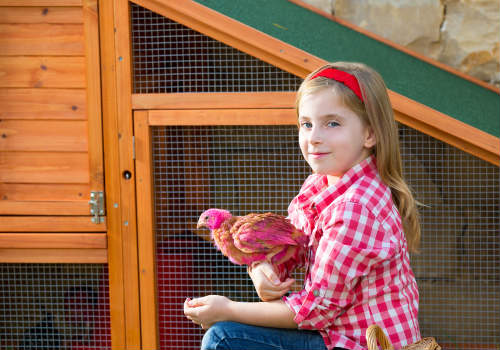
What Comes Next?
Once you have determined the space available for your chicken coop, you can then start to figure out the number of chickens you’ll be able to keep. Just make sure you leave a little bit of wiggle room for changes to your flock.
You will need to provide a healthy environment for your chickens. That means finding a perfect balance between space and ecosystem. This will allow your flock to flourish. Chickens that are not given the proper space to roam are going to create balm spots on the ground from over foraging. You’ll also see visible poop, odor problems, and experience a fly problem.
Again, you should start small and then add more birds as needed. Most people tend to underestimate the space needed for their birds. They also overestimate their own family’s egg consumption. Starting with fewer chickens will give you time to slowly expand.
Breaking It All Down
So the question that is still looming in the back of your mind is what size chicken coop do you need for 4 chickens? What about 6 chickens? Or even 8 chickens?
This is really easy to figure out. The most difficult part is actually deciding on the dimensions of the coop. Let me break it all down in an easily digestible format.
Here are some of the quick figures broken down into specific categories:
Free Range During Day Only Chickens
- Heavy birds will need at least 4 square feet per chicken
- Lighter birds need 3 square feet per chicken
- Bantam breeds require 2 square feet per bird
Confined at All Times
Birds that are confined at all times are going to require more space within the coop to prevent a wide range of potential problems.
- Heavy birds will need at least 10 square feet per chicken
- Lighter birds need 7.5 square feet per chicken
- Bantam breeds require 5 square feet per bird
The Formula
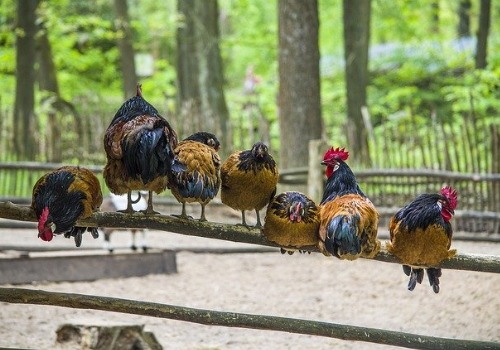
So you’ll need to start by deciding whether you’re going to raise free-range birds or confined birds. Then multiply the number of birds by their square foot requirements. That will give you the total square footage of space required. Here are a few examples.
Example 1: 8 free-range chickens that are large breed would require a coop that is 32 square feet.
4 (Square feet per bird) x 8 (total number of birds) = 32 Square Feet
Example 2: 15 confined chickens that are light breed would require a coop that is 112.5 square feet.
7.5 (Square feet per bird) x 15 (total number of birds) = 112.5 Square Feet
Example 3: 20 confined bantam chickens would require a coop that is 100 square feet.
5 (Square feet per bird) x 20 (total number of birds) = 100 Square Feet
Calculating the Dimensions of the Chicken Coop
That was actually the easy calculation. Now we need to determine the actual dimensions of the chicken coop, which is a bit trickier. The best way to do this is to use the dimensions of a piece of plywood as a starting point. Plywood is 4 x 8 feet so you will use this measurement to determine the size of the floor. The reason we use this as a starting point is that it makes building the coop so much easier since materials are designed to this specification.
So you will plan the floor in increments of 4 x 8 feet. Here’s a simple explanation.
Start with one piece of plywood. We know that one piece is going to be 32 square feet (4 x 8). So if you are following example 1 above and need only 32 square feet, then one piece would meet your goal. But if 32 square feet is not enough, add another piece of plywood. That would give is an 8 x
You want to avoid having to cut pieces of plywood if possible because it makes everything so much easier. I also recommend that you look at your available space and use flags to plan for these pieces of plywood. Also, keep in mind that it’s okay to provide more square footage than necessary. But you can never have less than the required space.
Account for the Nesting Box
You also need to account for the space that is required for the nesting box. There are a couple of different ways that you can do this. The first is to build a large open nesting box that all hens can get into at the same time. The other method is to build individual nests where hens can lay separately. The advantage of providing closed nests is that they give your hens more privacy.
[amazon bestseller=”Chicken nesting box”]
No matter what option you choose, you must provide at least one cubic foot of space per chicken inside of each nest.
So if you are raising 8 hens and planning to build one open nesting box, then it would need to be eight feet long, one foot deep, and one foot tall (8x1x1).
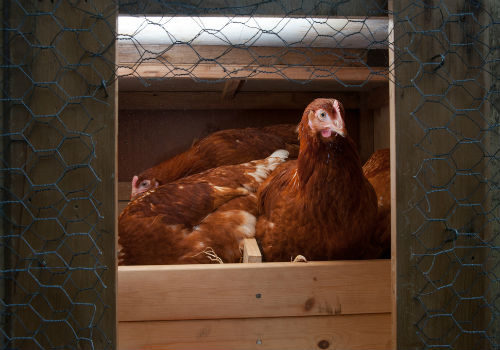
Give Them Enough Room for Toys!
Chickens need to be entertained so be sure that you provide them with enough room for toys. For animals, toys are simply things that they can interact with. Nothing too fancy is required. For instance, you can place a few plastic cylinders filled with scratch on the floor.
You can also install a chicken bath. However, it’s important to keep in mind that chickens bathe in the dirt so place a galvanized tub filled with loose garden dirt in the chicken coop. You can mix in some ash from your fireplace if available for an added bonus. Just be sure to keep this tub free of chicken droppings.
The bottom line here is that you need to make sure that your chickens have enough room for their natural movements. Stuffing a lot of chickens into a small area is not only inhumane but detrimental to their health.
If this article was more in-depth than you needed and/or desired and you just want a small chicken coop for a few chickens, check out our chicken coop buyer’s guide.
[amazon bestseller=”chickens coop”]

